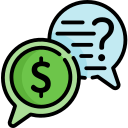Cash Flow Forecasting and Scenario Planning
Specialized forecasting apps build rolling 13-week projections that spotlight where inflows and outflows pinch. One bakery owner realized flour deliveries could shift by two days to avoid an overdraft. Small adjustments like that, repeated, turn fragile cash cycles into something sturdy and predictable.
Cash Flow Forecasting and Scenario Planning
Instead of guessing totals, tie budgets to drivers like leads, conversion rates, units shipped, or billable hours. Good tools let you edit a single driver and watch the cascade across revenue, payroll, and cost of goods. It feels like turning dials rather than rewriting a novel every month.





